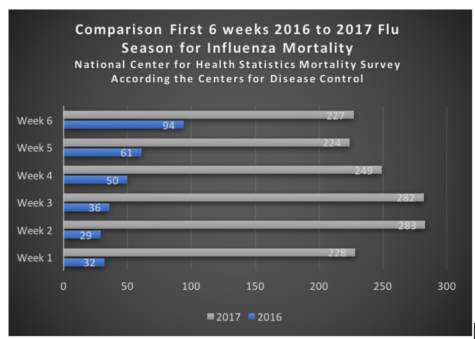
Fourteen people in California have died from influenza this flu season according to the California Department of Public Health (CDPH).
Influenza, the medical term for flu, season tends to begin around October and end as late as May, peaking between the months between December and February.
“This count represents a fraction of the total flu deaths statewide because only deaths in people younger than 65 are reported to the state, and not all influenza-related deaths are easily attributable to influenza,” according to the CDPH.
The flu is a viral infection of the respiratory system. It is highly contagious and has very common symptoms, like fever and vomiting. There are many different strains of influenza meaning that there are many specific subtypes of the flu.
“Human influenza A and B viruses cause seasonal epidemics of disease almost every winter in the United States,” said the Center for Disease Control and Prevention (CDC).
People who have the highest risk of catching the flu are very young children under the age of five and adults over the age of 65. Pregnant women and obese people are also at a high risk of getting the flu.
Sophomore Lexie Hamdun, who did not receive the shot this year, said, “No, I have not (received the flu shot). My doctor told me that it is more vital for younger children and elders.”
People, especially in today’s society, do not view the flu as deadly because many of the symptoms can be associated with less serious illnesses. While to healthy people the flu does not pose a huge danger, it can still be spread very easily.
“Most experts believe that flu viruses spread mainly by droplets made when people with the flu cough, sneeze, or talk. These droplets can land in the mouths or noses of people who are nearby,” according to the CDC.
Making sure people get vaccinations annually can reduce the chances of people becoming infected and spreading influenza.


